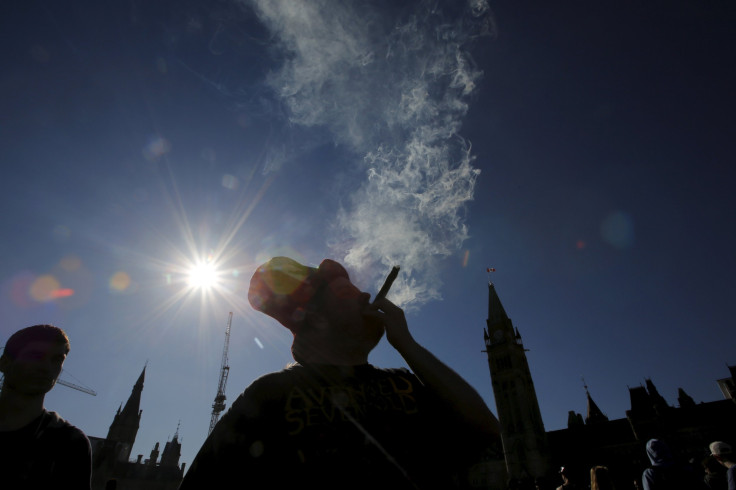Marijuana Use On The Rise Among Americans As Perceptions Change Amid Legalization, Study Finds

More people in the United States are using Marijuana than ever before, a new study finds as the perception of smoking pot is changing among Americans. Over 13 percent of adults of 500,000 surveyed in 2014 said they had used cannabis in the previous year, up from close to 10 percent in 2002, the study published Wednesday in The Lancet Psychiatry stated.
The prevalence of the perceived risk of smoking pot once or twice a week decreased from 50.4 percent to 33.3 percent, the study found. The researchers estimated that the overall number of marijuana users increased from 22 million to 32 million during that period, with first-time marijuana users jumping from more than 800,000 to 1.4 million. The study was reportedly completed before Colorado, Oregon, Washington and Alaska legalized recreational marijuana.
"Although shifts in perceived risk have historically been important predictors of adolescent marijuana trends, no previous research has examined this relationship in adults. State laws related to marijuana use in the USA have changed considerably over the past 20 years with medical marijuana now legalized in 25 states and the District of Columbia. Additionally, several jurisdictions have legalized non-medical marijuana use," lead study author Dr. Wilson Compton, deputy director of the U.S. National Institute on Drug Abuse, said.
"Understanding patterns of marijuana use and dependence, and how these have changed over time is essential for policy makers who continue to consider whether and how to modify laws related to marijuana and for health-care practitioners who care for patients using marijuana. Perceived risk of marijuana use is associated with high frequency of use suggesting the potential value for modifying risk perceptions of marijuana use in adults through effective education and prevention messages," he added.
The increase in pot use comes as a growing number of states are changing laws to legalize medical, and to a lesser extent, recreational marijuana, which may be playing a role in changing public perception of the drug.
Meanwhile, Wayne Hall of the University of Queensland in Australia, who wrote an accompanying editorial to the study, stated that continued monitoring of marijuana use is required as the study concluded before recreational pot was legalized.
“It is likely that these policy changes will increase the prevalence and frequency of cannabis use and, potentially, cannabis use disorders in the longer term,” he said.
Hall said that while reasons for this are unclear, it may reflect changes in the characteristics of U.S. marijuana users.
"Namely, there are fewer users among young adults who are more likely to develop problems with use, and perhaps more older people are returning to infrequent use now that is legal, thereby reducing the proportion of all users who report problems," Hall said.
© Copyright IBTimes 2025. All rights reserved.





















